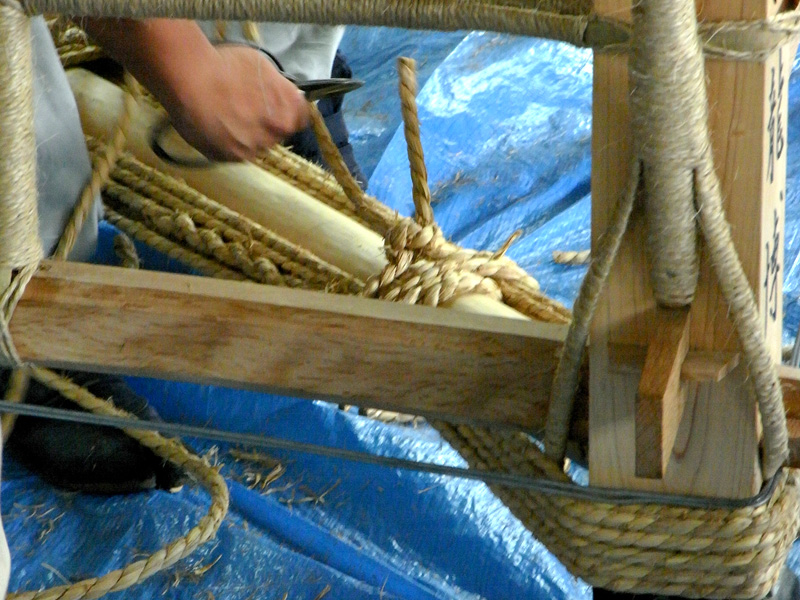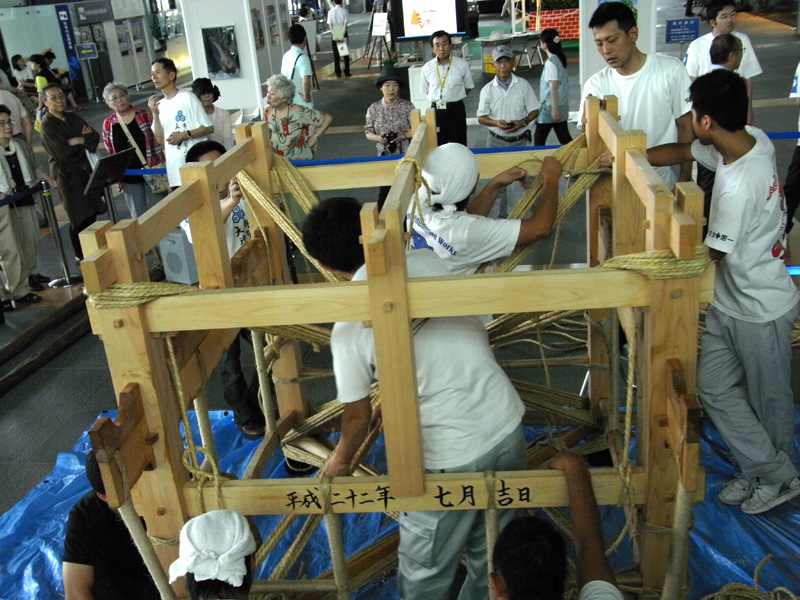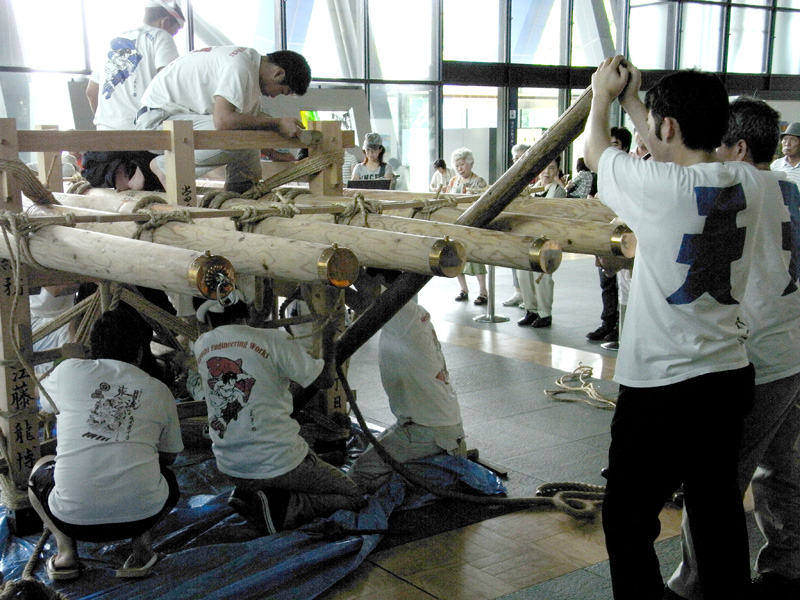The elements of the Kakiyama have been assembled, now to put them together. The base frame has already been put together by the carpenters using rope and wood glue. The hard part is the fixing of the poles to the base with only rope. A process which is called Bōjime.


Yamakasas Traditional Arts
More on the beauty and craftsmanship of the Handbarrows
Making the Kakiyama
Alot of poeple have seen the Kakiyama being carried around but not many have seen how it is assembled.
The 5.45 metre long carrying poles will be fixed to the base frame of the Kakiyama using two 41 metre long hemp ropes. At the Time of the Bōjime, the base frame has already been built with wood and rope. The rope will have to support about one ton (2 tons for the carrying Kazariyama of Kamikawabata-toori) of weight.
The techniques, that allow the rope to hold the frame so tighly together have been given down from carpenter master to apprentice for generations.
Bōjime explanation


Here we can see the rope, that will be used. All kinds of thicknesses are available.

The carrying poles, that are reused each year. Six of them in total, fresh from the Bōarai (washing with sea water).

The L-shaped bars, that are used as levers when tightening the rope.

First the diagonal poles between the feet are put into place with thin rope.

Then a staw rope is used to fix the poles into position and reinforce the whole struckture.

When the lower two diagonal bindings are complete, each two diagonally opposite corners of the cube structure is bound together with lots of rope. Since the cube has eight corners, this is referred to as the “Eight point binding”.

Both the diagonal bindings can clearly be seen from above.

All ropes are once more tightened and checked. The Eight point binding takes the stress from any side delivered to the framework. It makes the entire Kakiyama more stable and acts as a buffer for sudden blows.

Now that the frame is ready, the poles will be fixed onto in. Fist the poles are layed into the corresponding molds.

Checking to make sure the poles are all aligned correctly.

To make sure the poles don’t slide out of position, they are bound to a stick. This is removed later.

Short break before the tricky part after working hard for 70 minutes.

Now for the rope tightening. The large L-shaped poles are used to deiver the force to the knots and tighten the whole arrangement.

The lever principle is used while making the knots around the poles, giving each round of rope a strong grip.

Bringing the lever down is accompanied by shouts of “poles tightened!”. While tighening the wood also sometimes sweaks due to the pressure. The poles have to be so tighly bound to the frame as not to allow room for the knots to move and become unstable.

When each of the six poles is tighened the Bōjime is over.

Finally a box of sand, taken at the Oshioitori, is hung from the centre of the Eight chatacter binding.

On the ends of the most right and left poles ropes are installed for better grip since these postions are important for steering the Kakiyama.

This foto shows the knots used for the binding of the poles.

The rope holding the poles also acts as buffer for any vertical force and too strong roataional strain upon the Yamakasa when it is turned quickly.

After lever-tightening these knots for a few minutes, the rope will easyly hold one ton of Kakiyama.

A last the stage for the decorations, called “Shiori”, is placed on top.
Yamkasa Information
The Festivals History
Trivia
Even More Information




